Impedance spectroscopy for measurement and sensor systems

In impedance spectroscopy, the frequency-dependent complex impedance is used to measure and investigate effects with different frequency dependencies. The abundance of measurement data allows for precise detection of inaccessible measurands and tracking of individual aging mechanisms in batteries and identification of soil type in soil moisture sensors. This method finds typical applications in non-destructive testing of solids, electrochemical and biochemical systems. Sensor systems face challenges like limited resources, exposure to changing operating conditions, and the need for unsupervised automatic online signal processing.
Embedded Systems Design- Development of tailored embedded systems
- Battery management systems
- Inductive spectroscopy
- Systems for bio-friendly settings
- Integration of real-time monitoring systems
- Application-specific hardware and software design


Battery Diagnosis (Li-ion, Lead-acid)
- Experimental investigations on electrochemical storage devices
- Determination of State-of-Health using impedance spectroscopy
- Determination of temperature and State-of-charge using machine learning and analytic-based methods
- Development of physicochemical models
- Design of fast 0-charge excitation signal for stability and linearity during measurement
- Development of signal processing tools
- Method for fast recording of an impedance spectrum
- Fast and robust model fittings
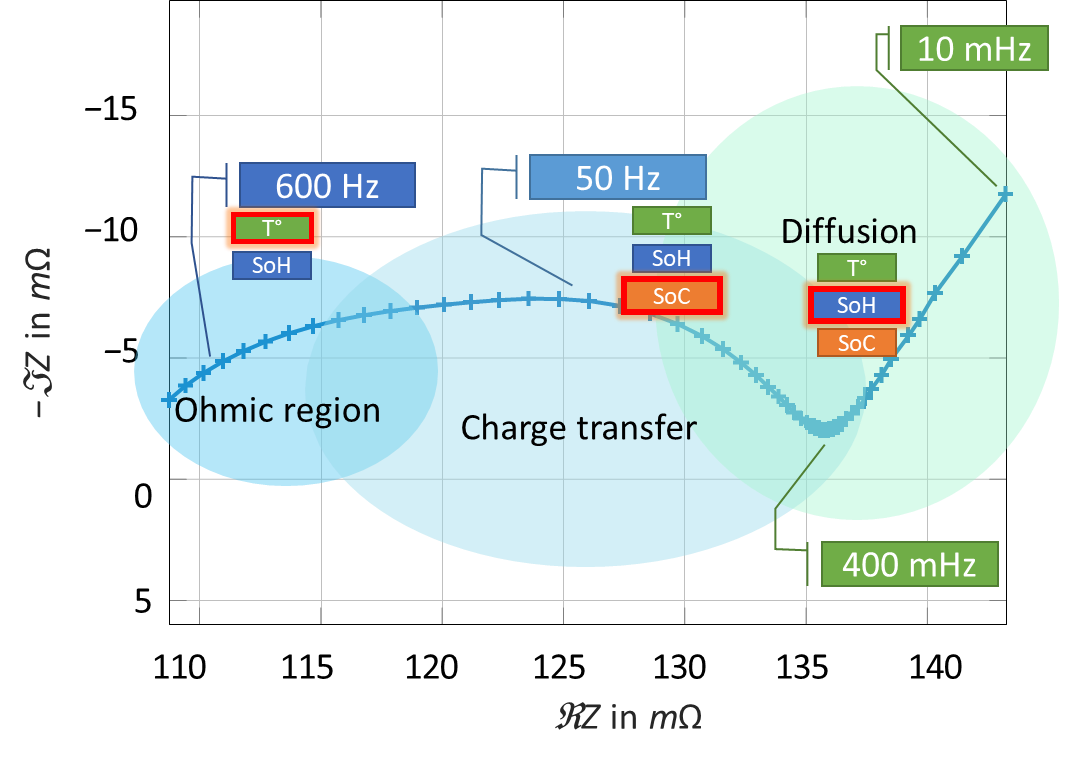

Bio-Impedance & Food Diagnosis
- Development of cutting-edge voltage-controlled current sources for bio-medical and bio-impedance settings
- Body composition
- Hand gesture recognition
- Tissue characterization
- Advanced signal processing, artificial intelligence, and machine learning solutions for:
-
- Freshness and ripeness of meat
- Milk adulteration detection
- Realtime human impedance measurement
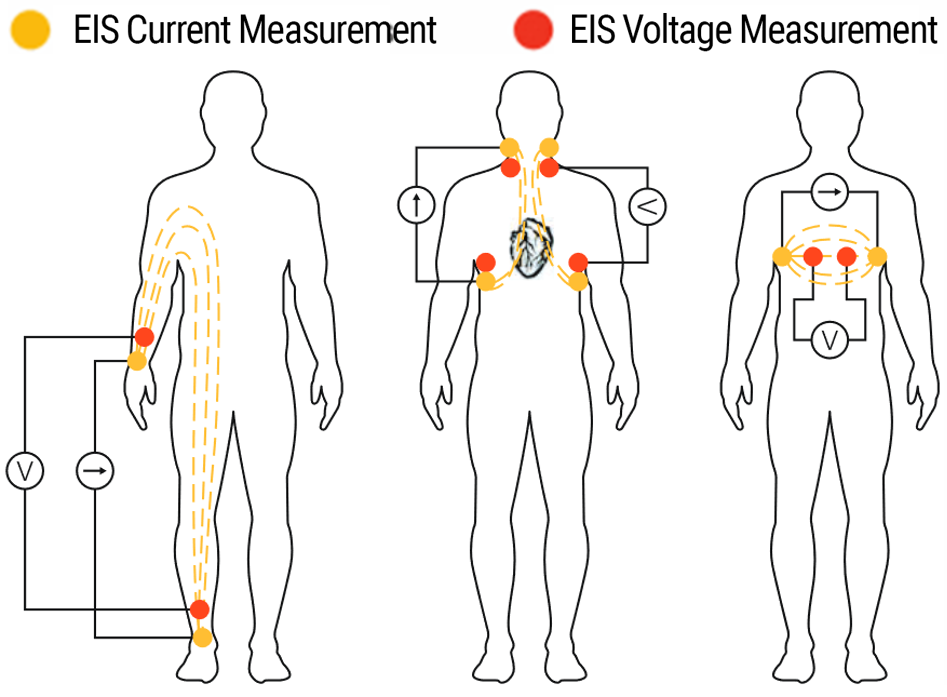

Inductance Spectroscopy
- Conductivity analysis
- Permeability analysis
- Thickness measurement
- Non-destructive testing
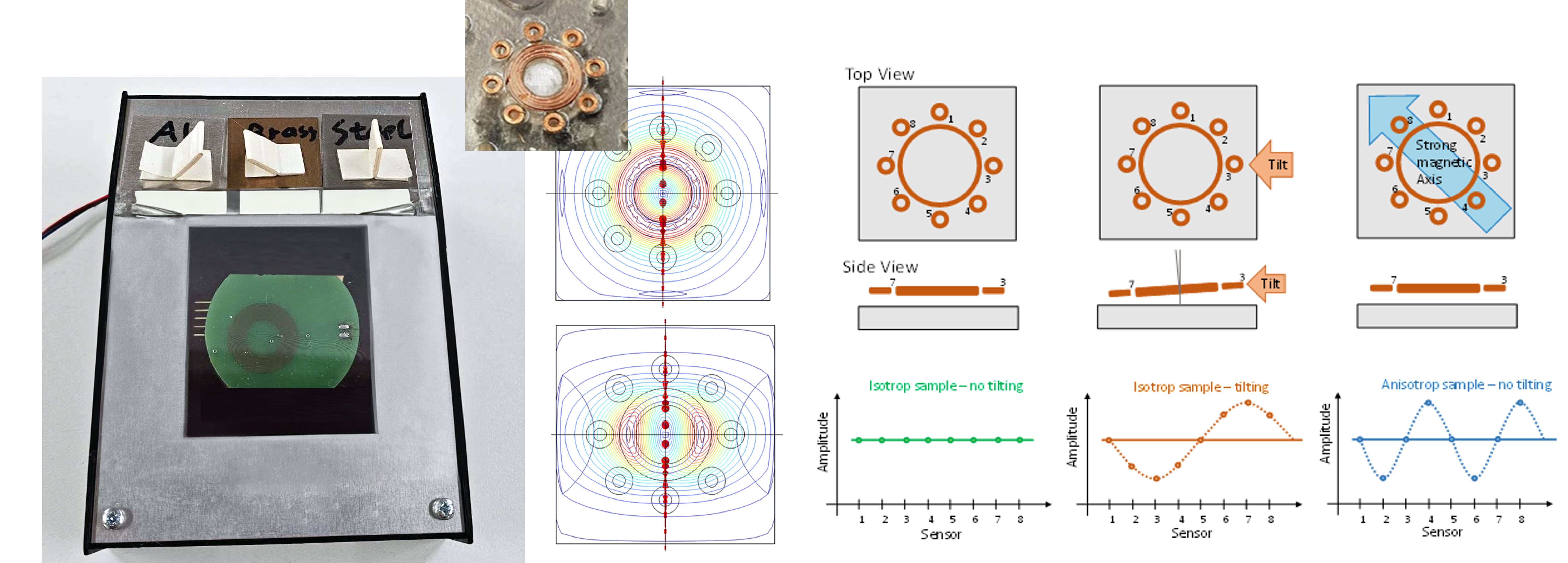
- Determining network structures
- Measurement of error sources such as cable inclusions or short circuits
- Localization of different error sources in the network

Excitation Signal Design and Data Analysis
- Generation of excitation signals for different applications (bioimpedance, battery diagnosis, fuel cells, etc.)
- Optimal multisine signal design to ensure linearity and stability during the measurement (Electrochemical systems)
- Signal conditioning and noise reduction
- Analog and digital signal processing techniques
- Advanced data analysis using ECM modeling, DRT, DIA
- Machine-learning-driven decision making

Selected Publications:
- Kanoun, O., Himmel, J. and Errachid, A., 2022. Impedance Spectroscopy and Its Application in Measurement and Sensor Technology. Applied Sciences, 13(1), p.244.
- Kanoun, O., Kallel, A.Y. and Fendri, A., 2022. Measurement methods for capacitances in the range of 1 pF–1 nF: A review. Measurement, 195, p.111067.
- Kanoun, O., Kallel, A.Y., Nouri, H., Atitallah, B.B., Haddad, D., Hu, Z., Talbi, M., Al-Hamry, A., Munja, R., Wendler, F. and Barioul, R., 2022. Impedance spectroscopy: applications, advances and future trends. IEEE Instrumentation & Measurement Magazine, 25(3), pp.11-21.
- Kallel, A.Y., Petrychenko, V. and Kanoun, O., 2022. State-of-health of Li-ion battery estimation based on the efficiency of the charge transfer extracted from impedance spectra. Applied Sciences, 12(2), p.885.
- Shi, Q., Troeltzsch, U. and Kanoun, O., 2010, June. Detection and localization of cable faults by time and frequency domain measurements. In 2010 7th International Multi-Conference on Systems, Signals and Devices (pp. 1-6). IEEE.
- Shi, Q. and Kanoun, O., 2013. A new algorithm for wire fault location using time-domain reflectometry. IEEE Sensors Journal, 14(4), pp.1171-1178.
- Haddad, D., Kallel, A.Y., Amara, N.E.B. and Kanoun, O., 2022. Multiple faults detection and location in bus-shaped cable networks by distributed time-domain reflectometry. IEEE Sensors Letters, 6(5), pp.1-4.
- Bader, O., Haddad, D., Kallel, A.Y., Hassine, T., Amara, N.E.B. and Kanoun, O., 2021. Identification of communication cables based on scattering parameters and a support vector machine algorithm. IEEE Sensors Letters, 5(7), pp.1-4.
- Kallel, A.Y., Haddad, D., Keutel, T. and Kanoun, O., 2022. Real-Time Monitoring of Cables Based on Network Interface Controllers for Predictive Maintenance. IEEE Transactions on Instrumentation and Measurement, 71, pp.1-8.
- Nouri, H., Guermazi, M., Kallel, A.Y., Hao, W. and Kanoun, O., 2022, September. Meat Freshness Assessment based on Impedance Spectroscopy and Distribution of Relaxation Times (DRT). In 2022 International Workshop on Impedance Spectroscopy (IWIS) (pp. 41-45). IEEE.
- Guermazi, M., Fendri, A., Kanoun, O. and Derbel, N., 2018. Potential of impedance spectroscopy for real-time assessing of food quality. IEEE Instrumentation & Measurement Magazine, 21(6), pp.44-48.
- Munjal, R., Arif, S., Wendler, F. and Kanoun, O., 2022. Comparative Study of Machine-Learning Frameworks for the Elaboration of Feed-Forward Neural Networks by Varying the Complexity of Impedimetric Datasets Synthesized Using Eddy Current Sensors for the Characterization of Bi-Metallic Coins. Sensors, 22(4), p.1312.
- Hu, Z., Ramalingame, R., Kallel, A.Y., Wendler, F., Fang, Z. and Kanoun, O., 2020. Calibration of an AC zero potential circuit for two-dimensional impedimetric sensor matrices. IEEE Sensors Journal, 20(9), pp.5019-5025.
- Wendler, F., Munjal, R., Waqas, M., Laue, R., Härtel, S., Awiszus, B. and Kanoun, O., 2021. Eddy current sensor system for tilting independent in-process measurement of magnetic anisotropy. Sensors, 21(8), p.2652.
- Fendri, A., Kallel, A.Y., Nouri, H., Ghariani, H. and Kanoun, O., 2019. Measurement system for lossy capacitive sensors: Application to edible oils quality assessment. Sensors, 19(19), p.4299.
- Kallel, A.Y. and Kanoun, O., 2023. On the design of multisine signals for maintaining stability condition in impedance spectroscopy measurements of batteries. Journal of Energy Storage, 58, p.106267.
- Ben Atitallah, B., Kallel, A.Y., Bouchaala, D., Derbel, N. and Kanoun, O., 2022. Comparative Study of Measurement Methods for Embedded Bioimpedance Spectroscopy Systems. Sensors, 22(15), p.5801.
- Kallel, A.Y., Hu, Z. and Kanoun, O., 2022. Comparative study of ac signal analysis methods for impedance spectroscopy implementation in embedded systems. Applied Sciences, 12(2), p.591.
- Kallel, A.Y., Fischer, A. and Kanoun, O., 2023, May. A Study of Binary Excitation Sequences for use in Battery Impedance Spectroscopy. In 2023 IEEE International Instrumentation and Measurement Technology Conference (I2MTC) (pp. 1-6). IEEE.
- Kallel, A.Y., Bouchaala, D. and Kanoun, O., 2021. Critical implementation issues of excitation signals for embedded wearable bioimpedance spectroscopy systems with limited resources. Measurement Science and Technology, 32(8), p.084011.
- Munjal, R., Wendler, F. and Kanoun, O., 2019. Embedded wideband measurement system for fast impedance spectroscopy using undersampling. IEEE Transactions on Instrumentation and Measurement, 69(6), pp.3461-3469.
- Bouchaala, D., Kanoun, O. and Derbel, N., 2016. High accurate and wideband current excitation for bioimpedance health monitoring systems. Measurement, 79, pp.339-348.
- U. Tröltzsch, F. Wendler, O. Kanoun: Simplified analytical inductance model for a single turn eddy current sensor. In: Sensors and Actuators A: Physical (2012)
-
P. Büschel, U. Tröltzsch, O. Kanoun: „Use of Stochastic Methods for Robust Parameter Extraction from Impedance Spectra“, Electrochimica Acta, vol. 56., no. 23, pp. 8069 - 8077 (2011), ISSN: 0013-4686, Elsevier
- H.-R. Tränkler, O. Kanoun, et al.: “Smart sensor systems using impedance Spectroscopy”, Proc. Estonian Acad. Sci. Eng 13.4 (2007): 455-478 (Special Issue for Thomas Johann Seebeck)
- O. Kanoun: „Untersuchungen zu Sensoren mit variierter Anregung“, Technisches Messen 73 (2006) 7/8, Oldenbourg Verlag
- O. Kanoun, U. Tröltzsch, H.-R. Tränkler: "Benefits of Evolutionary Strategy in Modeling of Impedance Spectra", S. 1453-1461, Electrochimica Acta 51 (2006), Elsevier
Wireless energy self-sufficient sensor networks


Energy Harvesting and autonomous ambient energy supply
- Wideband electrodynamic Vibration transducers
- Magnetoelectric Vibration transducers
- Piezoelectric Nanogenerators
- Hybrid Energy Harvesting
- Coil detection
- Multi-coil systems for magnetic field improvement
- Flexibility with long distances and misalignment

- Energy aware electronics design
- Smart and efficient energy management
- Definition of working states and control strategies
- Modelling and prediction of energy
- Minimization of energy demands and maximization of available energy

- Efficient routing
- Energy aware clustering
- Localization through the network
- Smart power distribution within the network
- Dynamic and flexible network management
- Precision farming applications like smart irrigation systems or fertilizer monitoring
- Industry 4.0 with predictive maintenance
- Disaster monitoring like surveillance of water depth or speed during floods
- Smart grid applications
- Monitoring of goods in the transport sector
- Body attached sensors and wearables

Selected publications:
- Naifar S, Bradai S, Viehweger C, Kanoun O. "Investigation of the magnetostrictive effect in a terfenol-D plate under a non-uniform magnetic field by atomic force microscopy", Materials & Design, 2016
- S. Bradai, S. Naifar: "Finite element analysis of combined magnetoelectric- electrodynamic vibration energy converter", Journal of Physics: Conference Series, Volume 660, conference 1, Dec. 2015
- Bradai S, Naifar S, Viehweger Chr, Kanoun O, Litak G: "Nonlinear analysis of an electrodynamic broadband energy harvester", The European Physical Journal Special Topics. - 224. 2015, 14, pp. 2919 - 2927
- S Bradai, S Naifar, Chr Viehweger, O Kanoun: "Response analysis of a nonlinear magnetoelectric energy harvester under harmonic excitation", The European Physical Journal Special Topics. - 224. 2015, 14, pp. 2897 - 2907
- S Khriji, D El Houssaini, MW Jmal, C Viehweger, M Abid, O Kanoun: "Precision irrigation based on wireless sensor network", IET Science, Measurement and Technology, Volume 8, Issue 3, 2014, Pages 98-106
- Chr. Viehweger, T. Keutel, L. Kasper, T. Pfeifer, O. Kanoun: "System Design and Energy Management for Indoor Solar Energy Harvesting Under Consideration of Spectral Characteristics of Solar Cells", International Journal of Measurement Technologies and Instrumentation Engineering ( IJMTIE) - 3 . 2013 , 1 , 1-15
- X. Zhao, T. Keutel, M. Baldauf, O. Kanoun: "Energy harvesting for a wireless-monitoring system of overhead high-voltage power lines", IET Generation, Transmission & Distribution, Volume 7, Issue 2, February 2013, p. 101-107
- N Ben Amor, O Kanoun: "Availability of Vibration Energy for Supply of Hearing Aids", Transactions on Systems, Signals & Devices, Vol. 4, 2009
- O. Kanoun: "Energy-management for Power-Aware Portable Sensor Systems", Transactions on Systems, Signals & Devices, Vol. 4, 2008, ISSN 1861-5252
Sensors based on Nanocomposite

Technological advances in micro and nanotechnology offer promising opportunities for new sensors and sensor principles. Polymer nanocomposites have attracted much interest and have found significant practical use in various scientific and technological domains because of their greater sensitivity and simple processibility. Moreover, exceptional mechanical and electrical properties and the possibility of tuning the material properties of the polymer nanocomposites containing smart carbon nanomaterials, such as graphene and carbon nanotubes (CNTs), have gained tremendous attraction in developing these novel sensors.
Even if film homogeneity is not an absolute requirement for its functionality, reproducibility is of great interest. The synthesis and fabrication of nanocomposites are crucial for achieving unique sensor properties, from dispersion quality to deposition. Various characterizations are necessary to optimize the sensitive layers to determine their morphological, mechanical, thermal, and electrical properties.
These Polymer nanocomposite-based sensors can detect critical physical characteristics such as strain/stress, pressure, temperature, solvent, or vapor by leveraging the stimuli-responsive performance of conductive networks to physical factors. Further, we focus on using RFID chips to realize wireless and autonomous sensing systems based on carbon nanocomposite with integrated RFID chips working at UHF frequency to monitor strain and temperature in various applications such as aerospace, civil and industry V4.0.
Highlights from the field of flexible sensors
In particular, the following sensors and topics are being developed and intensively examined:
- Characterization of Carbon-based nanomaterials and biocompatible organic materials
- Synthesis and fabrication of polymer nanocomposites and biocomposite films
- Advanced techniques of characterization of nanocomposites such as SEM, FTIR, Raman spectroscopy

- Ultra-sensitive and durable nanocomposite-based pressure sensors
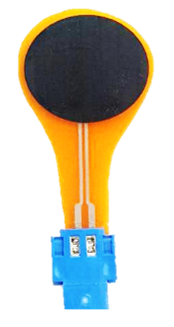

-
- Wide measuring range
- Temperature-compensated
- Highly stable sensor response
- Excellent repeatability
- Customizable sensor shape and thickness for mass production
- Flexible and stretchable nanocomposites-based strain sensors
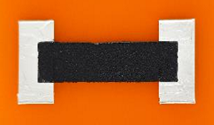
-
- Wide strain monitoring range
- Temperature-compensated
- High sensitivity K-factor>78 (commercial sensors: K-factor=2)
- Filament-based strain sensors

-
- Easy recycling
- High sensitivity
- Potential for 3D printable sensors
- Wired and Wireless Strain Sensor Antennas

-
- Various antenna structure types, MPA, CPW, and dipole antenna
- A chip or chip-less data transmission
- Large bandwidth and high measuring range (UHF or higher)
- Application of RFID technology
- Development of piezoelectric nanocomposite layers
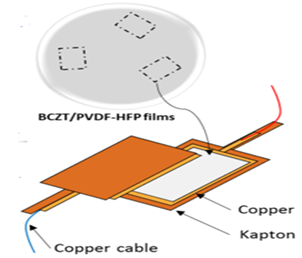
-
- Synthesis of ceramic nanoparticles with a high piezoelectric coefficient
- Enhancement of ceramic nanoparticles with doping
- Advanced techniques of characterization of ceramic nanoparticles
- Fabrication of piezoelectric nanocomposite layers (Sol-gel and hydrothermal route)
Selected Publications:
- Rajendran, Dhivakar, et al. (2022) “Role of Solvent Polarity on Dispersion Quality and Stability of Functionalized Carbon Nanotubes” in Journal of Composites Science. - MDPI AG. - 6. 2022, 1, 26.
- A. Bouhamed et al. (2022), “Collaborative Filler Network for Enhancing the Performance of BaTiO3/PDMS Flexible Piezoelectric Polymer Composite Nanogenerators,” Sensors, vol. 22, no. 11, p. 4181, doi: 10.3390/s22114181.
- Kanoun, Olfa et al. (2021). “Review on Conductive Polymer/CNTs Nanocomposites Based Flexible and Stretchable Strain and Pressure Sensors,” in Sensors. - MDPI AG. - 21. 2021, 2, 341.
- Bouhamed, Ayda et al. (2021). “Customising hydrothermal properties of inkjet printed sensitive films by functionalization of carbon nanotubes,” in Nanotechnology. - IOP Publishing. - 32. 2021, 10, 105708.
- Sanli, A., & Kanoun, O. (2020). Electrical impedance analysis of carbon nanotube/epoxy nanocomposite-based piezoresistive strain sensors under uniaxial cyclic static tensile loading. Journal of Composite Materials, 54(6), 845-855.
- R. Ramalingame, et al. (2019). “Temperature Self-Compensated Strain Sensors based on MWCNT/ Graphene Hybrid Nanocomposite” in Journal of Composites Science, vol. 3 (4), 96.
- Patent: Benchirouf, A., Kanoun, O. (2018): Hybrid Nanocomposite Material, Sensor Comprizing a Hybrid Nanocomposite Material, and Method for Producing same, DE102018116141.7, WO/2020/007417, 4th of July 2018
Electrochemical Sensors
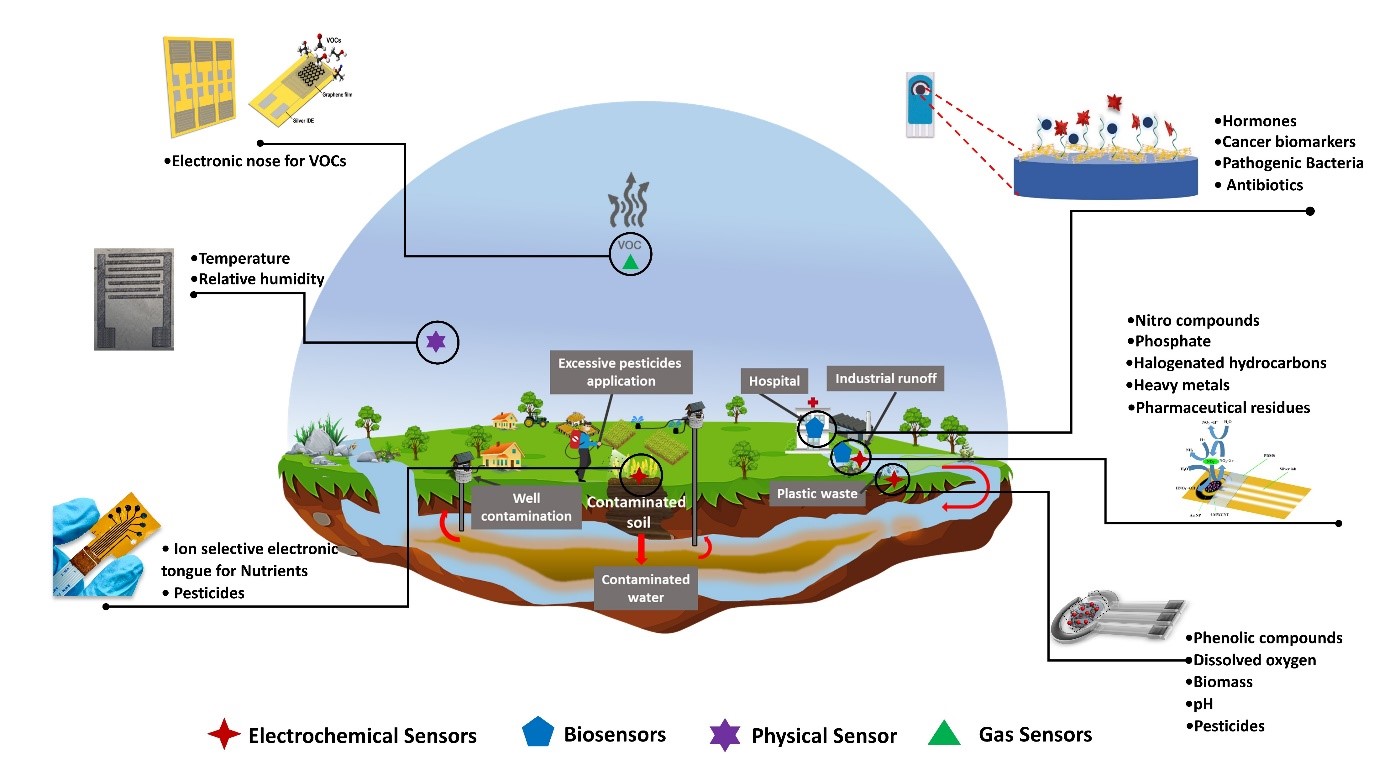

Our sensors based on different detection principles such as square wave, differential pulse voltammetry and EIS have found its applications idifferent sectors such as nitrate and nitrite monitoring in soil, aquaponics, dissolved oxygen, pH and biomass in bioreactors , pesticides detection to name a few. In addition, the group has also several published papers on biosensors for monitoring cancer biomarkers and pathogenic bacteria.
Apart from the individual sensors, we have extensive research expertise in the development of sensor arrays by integrating with machine learning techniques to monitor different contaminants in a single platform, e.g., artificial olfaction (electronic nose) and artificial gustation (electronic tongue). Finally, to ensure portability and real-time applications, miniaturized and low-cost potentiostat and impedance measurement devices are developed with the capability of measuring different electrochemical methods with high accuracy.
The following are the main details about specific sensors and topics under research and development in the Electrochemical sensors group
- Sensors for temperature and relative humidity monitoring
- Sensors for different organic and inorganic contaminants
- Sensors for bacteria, cancer, and other diseases
- Sensors for gases and VOCs monitoring
- Artificial olfaction and gustation (sensor array and machine learning)
- Finite element simulations
- Portable electronics and embedded system
Selected Publications:
- Nasraoui, Salem, Ammar Al-Hamry, T. I. Madeira, Sami Ameur, D. R. T. Zahn, Mounir Ben Ali, and Olfa Kanoun. "Structural characterization and electrochemical performance of laser-induced graphene: Insights into electron transfer kinetics and 4-aminophenol sensing." Diamond and Related Materials (2023):110207,doi: 10.1016/j.diamond.2023.110207
- Al-Hamry, Ammar, Tianqi Lu, Jing Bai, Anurag Adiraju, Tharun K. Ega, L. G. Paterno, Igor A. Pašti, and Olfa Kanoun. "Versatile sensing capabilities of layer-by-layer deposited polyaniline-reduced graphene oxide composite-based sensors." Sensors and Actuators B: Chemical 390 (2023): 133988, doi: 10.1016/j.snb.2023.133988
- Adiraju, Anurag, Rohan Munjal, Christian Viehweger, Ammar Al-Hamry, Amina Brahem, Jawaid Hussain, Sanhith Kommisetty, Aditya Jalasutram, Christoph Tegenkamp, and Olfa Kanoun. "Towards Embedded Electrochemical Sensors for On-Site Nitrite Detection by Gold Nanoparticles Modified Screen Printed Carbon Electrodes." Sensors 23, no. 6 (2023): 2961, doi: 10.3390/s23062961
- Jaradat, Hussamaldeen, Ammar Al-Hamry, Mohammed Ibbini, Najla Fourati, and Olfa Kanoun. "Novel Sensitive Electrochemical Immunosensor Development for the Selective Detection of HopQ H. pylori Bacteria Biomarker." Biosensors 13, no. 5 (2023):527 ,doi: 10.3390/bios13050527
- Alnaimi, A.; Al-Hamry, A.; Makableh, Y.; Adiraju, A.; Kanoun, O. Gold Nanoparticles-MWCNT Based Aptasensor for Early Diagnosis of Prostate Cancer. Biosensors 2022, 12, 1130, doi:10.3390/bios12121130.
- Anurag, Adiraju, Ammar Al?Hamry, Yashwanth Attuluri, Saravanan Palaniyappan, Guntram Wagner, Doreen Dentel, Christoph Tegenkamp, and Olfa Kanoun. "Optimized Reduction of a Graphene Oxide?MWCNT Composite with Electrochemically Deposited Copper Nanoparticles on Screen Printed Electrodes for a Wide Range of Detection of Nitrate." ChemElectroChem 10, no. 3 (2023): e202200945, doi: 10.1002/celc.202200945
- Lu, T.; Al-Hamry, A.; Hao, J.; Liu, Y.; Qu, Y.; Kanoun, O. Machine Learning-Based Multi-Level Fusion Framework for a Hybrid Voltammetric and Impedimetric Metal Ions Electronic Tongue. Chemosensors 2022, 10, 474, doi:10.3390/chemosensors10110474.
- Brahem, A.; Al-Hamry, A.; Gross, M.A.; Paterno, L.G.; Ali, M.B.; Kanoun, O. Stability Enhancement of Laser-Scribed Reduced Graphene Oxide Electrodes Functionalized by Iron Oxide/Reduced Graphene Oxide Nanocomposites for Nitrite Sensors. J. Compos. Sci. 2022, 6, 221, doi:10.3390/jcs6080221.
- Nasraoui, S.; Ameur, S.; Al-Hamry, A.; Ben Ali, M.; Kanoun, O. Development of an Efficient Voltammetric Sensor for the Monitoring of 4-Aminophenol Based on Flexible Laser Induced Graphene Electrodes Modified with MWCNT-PANI. Sensors 2022, 22, 833, doi:10.3390/s22030833.
Smart Wearables

Hand gesture recognition:



- Integration of different sensors technologies:
- Nanocomposite pressure and strain sensors
- Inertial measurements units (IMUs)
- Myoware sensors
- Investigation of different measurement methods :
- Force myography (FMG)
- Electrical impedance tomography (EIT)
- Electrical impedance myography (EIM)
- Electromyography (EMG)
- Real-time gesture recognition for:
- ASL recognition
- Robotic control and telemanipulation
Multi-sensor node:

- Smart and compact node
- Multi-sensor system (IMU, pulse rate, temperature)
- RF communication
Gait Analysis:

-
Smart Insole design and realisation
-
3D design and exoskeleton
-
Analysis of foot pressure distribution
-
Harvesting energy from human activities
-
Human gait, footpath, and activities recognition
Electrical Impedance Tomography :

- Preliminary investigations using a water tank setup
- Lung monitoring applications (human thorax imaging)
- Gesture recognition applications (human forearm imaging)
Epileptic seizures identification:

- EMG and EEG signals acquisition
- Machine and Deep Learning models development
- Real-time Epileptic seizures recognition
Hand muscle rehabilitation monitoring:

- Muscle force estimation
- Muscle fatigue detection
- Biofeedback system based on myographic methods
Machine and Deep Learning Methods for Biomedical signals and embedded systems:

- Feature extraction, visualization, and evaluation?
- Swarm Intelligence methods for feature selection
- Extreme Learning Machine weight pruning
- Embedded machine Learning: Edge Computing and TinyML
Selected Publications:
- Barioul, R.; Kanoun, O. k-Tournament Grasshopper Extreme Learner for FMG-Based Gesture Recognition. Sensors 2023, 23, 1096. https://doi.org/10.3390/s23031096
- Djemal, A.; Bouchaala, D.; Fakhfakh, A.; Kanoun, O. Wearable Electromyography Classification of Epileptic Seizures: A Feasibility Study. Bioengineering 2023, 10, 703. https://doi.org/10.3390/bioengineering10060703
- Ben Atitallah, B.; Kallel, A.Y.; Bouchaala, D.; Derbel, N.; Kanoun, O. Comparative Study of Measurement Methods for Embedded Bioimpedance Spectroscopy Systems. Sensors 2022, 22, 5801. https://doi.org/10.3390/s22155801
- Hafsa, Mariem, Ben Atitallah, Bilel, Ben Salah, Taha, Essoukri Ben Amara, Najoua and Kanoun, Olfa. "A genetic algorithm for image reconstruction in electrical impedance tomography for gesture recognition" tm - Technisches Messen, vol. 89, no. 5, 2022, pp. 310-327. https://doi.org/10.1515/teme-2021-0126
- B. Ben Atitallah et al., "Hand Sign Recognition System Based on EIT Imaging and Robust CNN Classification," in IEEE Sensors Journal, vol. 22, no. 2, pp. 1729-1737, 15 Jan.15, 2022, doi: 10.1109/JSEN.2021.3130982.
- R. Ramalingame et al., "Wearable Smart Band for American Sign Language Recognition With Polymer Carbon Nanocomposite-Based Pressure Sensors," in IEEE Sensors Letters, vol. 5, no. 6, pp. 1-4, June 2021, Art no. 6001204, doi: 10.1109/LSENS.2021.3081689.
- M. Medhioub, I. Khanfir Kallel, S. Ammar Bouhamed, N. Derbel, B. Solaiman and O. Kanoun, "Electronic Embedded System for Stair Recognition Based on Possibilistic Modeling of Ultrasonic Signal," in IEEE Sensors Journal, vol. 21, no. 5, pp. 5787-5797, 1 March1, 2021, doi: 10.1109/JSEN.2020.3035834.
- Jmal, A., Barioul, R., Meddeb Makhlouf, A., Fakhfakh, A., Kanoun, O. (2020). An Embedded ANN Raspberry PI for Inertial Sensor Based Human Activity Recognition. In: Jmaiel, M., Mokhtari, M., Abdulrazak, B., Aloulou, H., Kallel, S. (eds) The Impact of Digital Technologies on Public Health in Developed and Developing Countries. ICOST 2020. Lecture Notes in Computer Science(), vol 12157. Springer, Cham. https://doi.org/10.1007/978-3-030-51517-1_34
